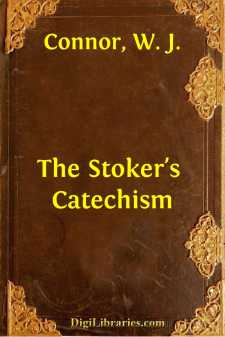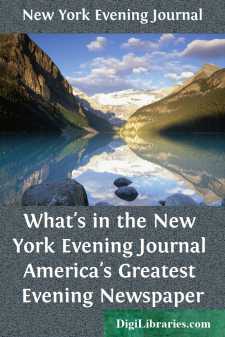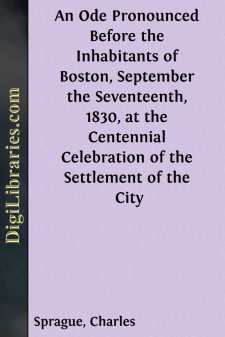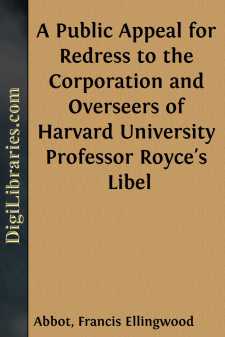Non-Classifiable
- Non-Classifiable 1768
Non-Classifiable Books
Sort by:
by:
Julian Hawthorne
PREFACE These chapters were begun the day after I got back to New York from the Atlanta penitentiary, and went on from day to day to the end. I did not know, at the start, what the thing would be like at the finish, and I made small effort to make it look shapely and smooth; but the inward impulse in me to write it, somehow, was irresistible, in spite of the other impulse to go off somewhere and rest...
more...
by:
W. J. Connor
THE STOKER'S CATECHISM. 1. Question.—How would you proceed to get steam up in a boiler? Answer.—Having filled the boiler with water to the usual height, that is to say, about four inches over the crown of the fire-tube, I throw in several shovelfuls of coal or coke towards the bridge, left and right, keeping the centre clear; then I place the firewood in the centre, throw some coals on it,...
more...
INTERNATIONAL NEWS SERVICEREPORTS NEWS OF THE WORLDFOR EVENING JOURNALREADERS International News Service has firmly established itself as the dominant press service in the afternoon newspaper field. Its news dispatches, gathered from every corner of the universe, likewise are published in newspapers throughout the civilized world. International News Service is truly international in scope, linking...
more...
THE CLEVER KID TIME: this morning. PLACE: a pasture. GRAY WOLF.WHITE WOLF.KID. [The GRAY WOLF and the WHITE WOLF are standing at the foot of a hill; at the top of the hill is a KID.] GRAY WOLF. Look, brother, there is a kid! WHITE WOLF. Where? Where? GRAY WOLF. On that hill to the south. WHITE WOLF. I do not see her. GRAY WOLF. She is on the very top. WHITE WOLF. Ah, now I see her! GRAY WOLF. I wish we...
more...
by:
Charles Sprague
I.Notto the Pagan’s mount I turn,For inspiration now;Olympus and its gods I spurn—Pure One, be with me, Thou!Thou, in whose awful name,From suffering and from shame,Our Fathers fled, and braved a pathless sea;Thou, in whose holy fear,They fixed an empire here,And gave it to their Children and to Thee.II.And You! ye bright ascended Dead,Who scorned the bigot’s yoke,Come, round this place your...
more...
The rent of land is a portion of the national revenue, which has always been considered as of very high importance. According to Adam Smith, it is one of the three original sources of wealth, on which the three great divisions of society are supported. By the Economists it is so pre-eminently distinguished, that it is considered as exclusively entitled to the name of riches, and the sole fund which is...
more...
EXPLOSIVE AND POISONED MUSKET AND RIFLE BALLS. The following remarkable statement occurs as a note to the account of the battle of Gettysburg, on page 78, volume III, of "The Pictorial History of the Civil War in the United States of America, by Benson J. Lossing, LL. D.": Many, mostly young men, were maimed in every conceivable way, by every kind of weapon and missile, the most fiendish of...
more...
PUBLIC APPEAL. To the President and Fellows and Board of Overseers of Harvard University: Gentlemen,—Believing it to be a necessary part of good citizenship to defend one's reputation against unjustifiable attacks, and believing you to have been unwarrantably, but not remotely, implicated in an unjustifiable attack upon my own reputation by Assistant Professor Josiah Royce, since his attack is...
more...
PREFACE. The rapid advances made in the science of botany within the last few years necessitate changes in the text books in use as well as in methods of teaching. Having, in his own experience as a teacher, felt the need of a book different from any now in use, the author has prepared the present volume with a hope that it may serve the purpose for which it is intended; viz., an introduction to the...
more...
by:
William Booth
What is the outward and visible form of the Problem of the Unemployed? Alas! we are all too familiar with it for any lengthy description to be necessary. The social problem presents itself before us whenever a hungry, dirty and ragged man stands at our door asking if we can give him a crust or a job. That is the social question. What are you to do with that man? He has no money in his pocket, all that...
more...











